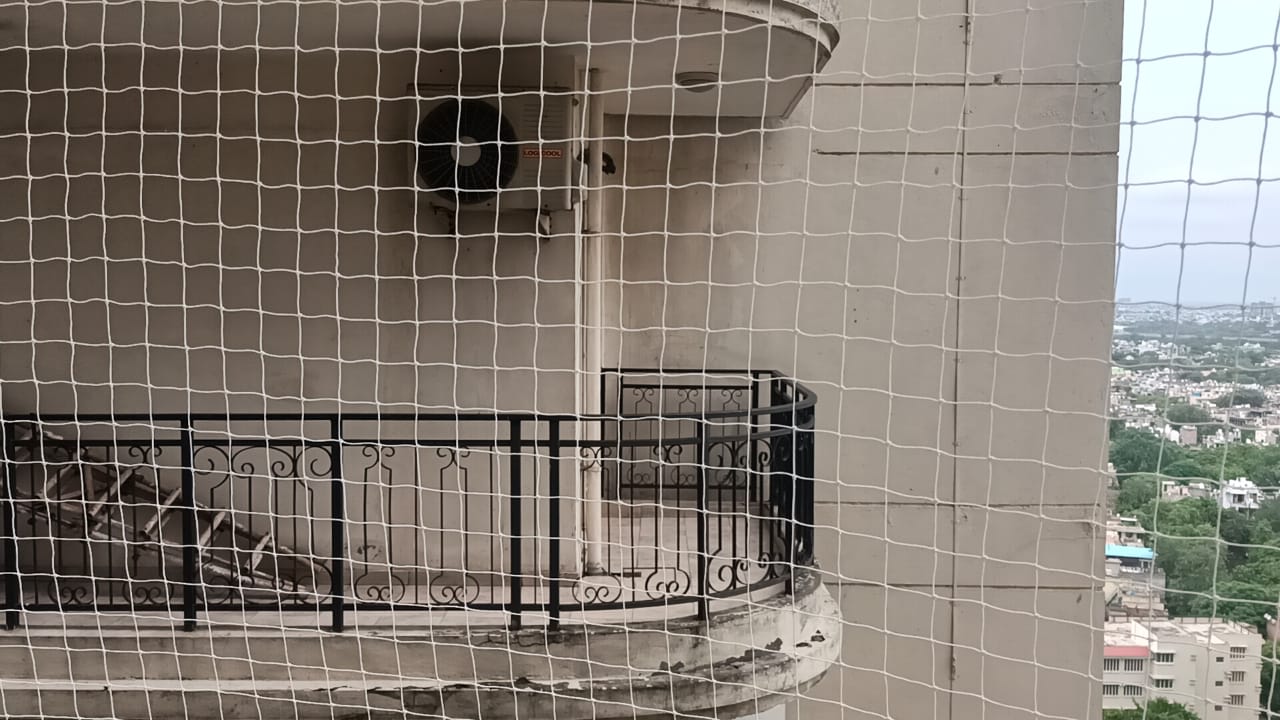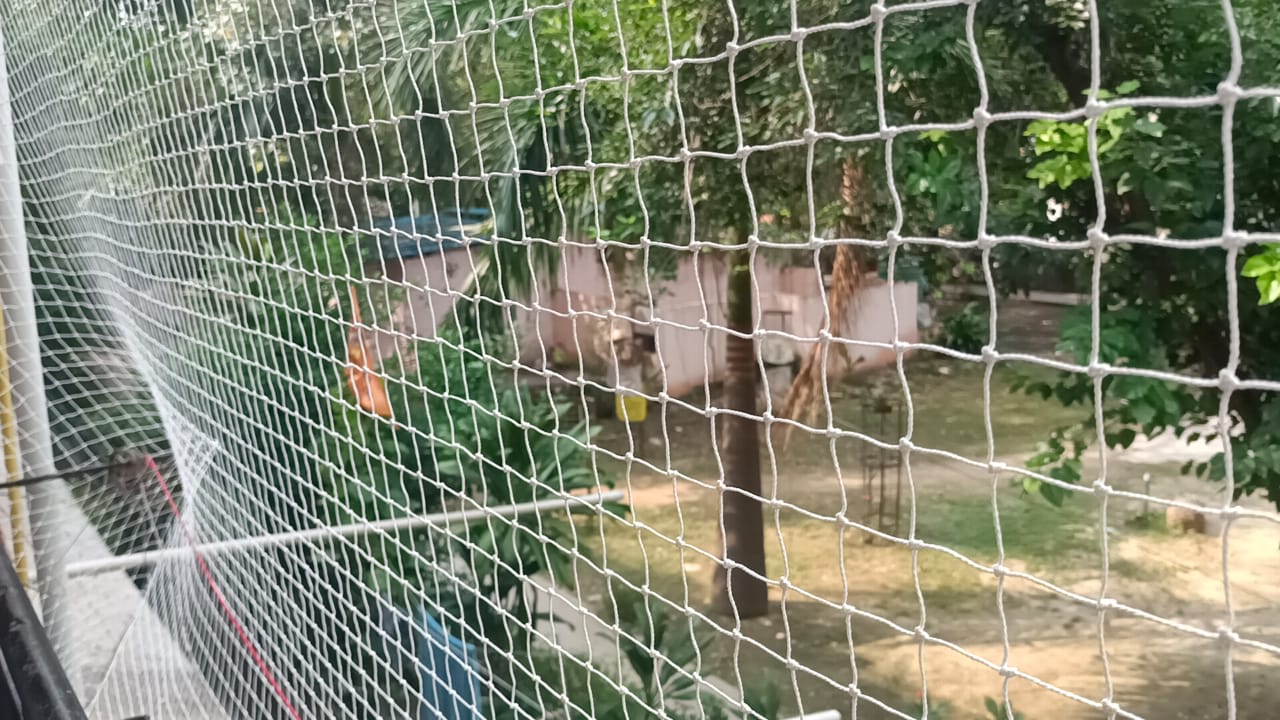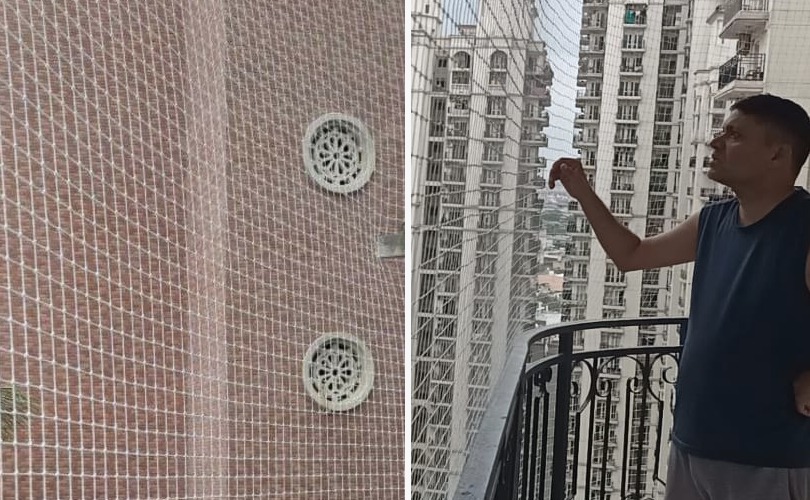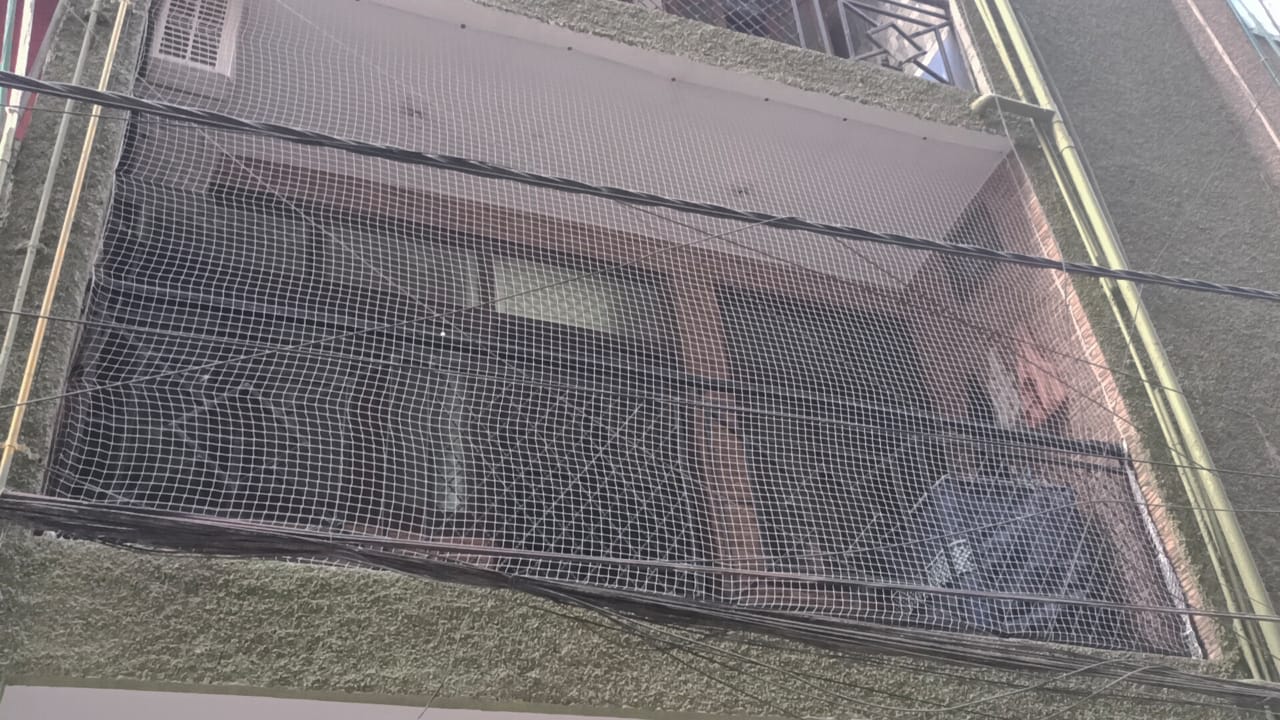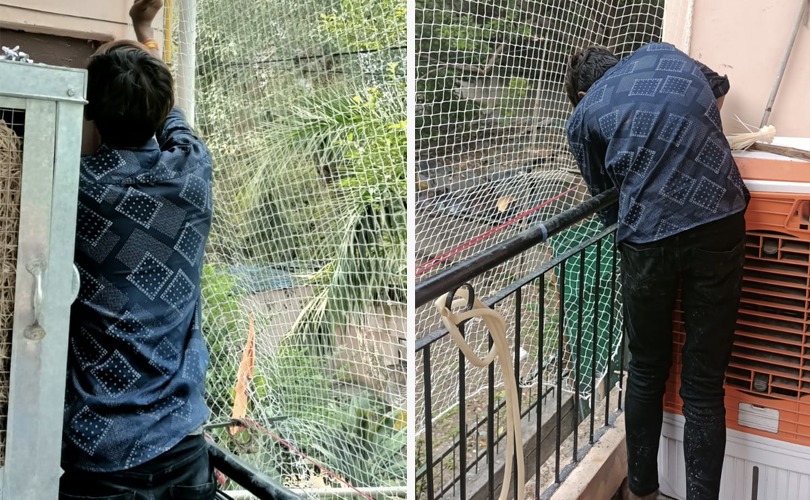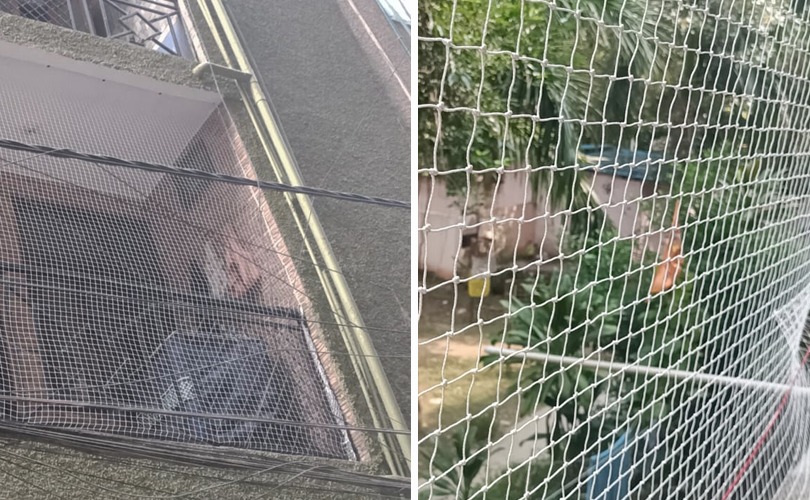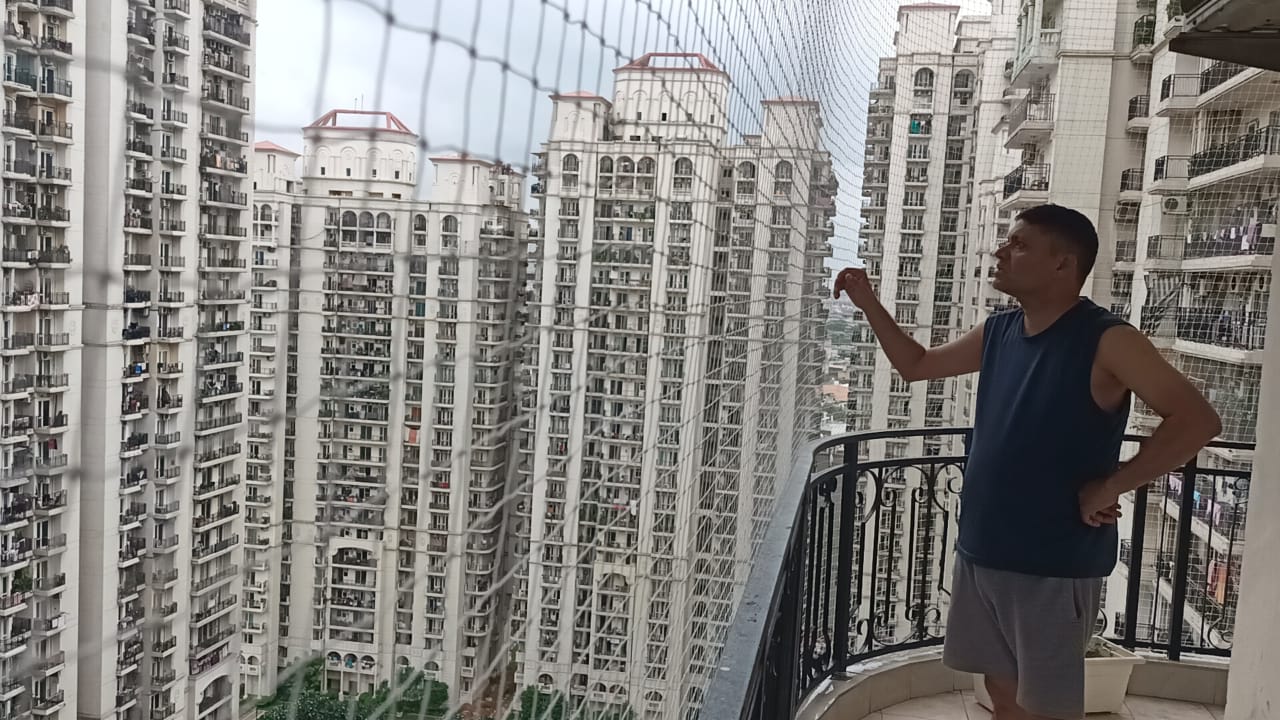
Birds can often become a nuisance when they intrude upon our properties, causing damage and creating a mess. In urban areas where bird populations are abundant, it becomes essential to find effective solutions to keep them away. One such solution is the installation of anti-bird nets. In this article, we will explore the benefits of anti-bird nets and how they can help protect your property from avian intrusion.
Why Are Anti-Bird Nets Necessary?
Urban regions face unique challenges when it comes to bird populations. The presence of numerous bird species can lead to various issues for residents and businesses alike. Here are the key reasons why anti-bird nets are necessary:
1. Minimizing Property Damage
Birds can cause significant damage to buildings, structures, and outdoor spaces. Pigeons, for example, tend to roost on rooftops, ledges, and balconies. Over time, their droppings accumulate and corrode surfaces, leading to unsightly stains and erosion of building materials. The acidic nature of bird droppings can also damage paintwork and deteriorate the integrity of structures. By installing anti-bird nets, property owners can effectively prevent birds from accessing these areas and minimize the risk of damage.
2. Ensuring Hygiene and Cleanliness
Bird droppings not only deface the appearance of properties but also pose health hazards. Anti-bird nets act as a physical barrier, preventing birds from roosting, nesting, and leaving droppings in spaces like balconies, terraces, and gardens, thus ensuring a cleaner and safer environment.
3. Preventing Nuisance and Disturbance
Birds can be noisy, especially when they gather in large numbers. Their constant chirping, cooing, and squawking can become a source of annoyance for residents and businesses. Additionally, birds often create disturbances by dislodging roof tiles, scratching windows, or pecking at building surfaces. Such activities can disrupt the peace and tranquility of homes and workspaces. Anti-bird nets act as an effective deterrent, preventing birds from accessing these areas and minimizing the noise and disturbances caused by their presence.
4. Protecting Food and Crops
Birds, particularly pigeons, and sparrows, are notorious for scavenging food from open areas and outdoor dining spaces. Anti-bird nets can be employed to safeguard food establishments and agricultural fields, ensuring that birds are unable to access these areas and cause disruptions.
5. Preserving Aesthetic Appeal
The presence of birds can mar the aesthetic appeal of buildings, monuments, and public parks. Anti-bird nets help maintain the pristine appearance of these areas by preventing birds from roosting and nesting.
The Advantages of Anti-Bird Nets
Anti-bird nets provide several advantages when it comes to protecting your property from avian intrusion. Let's delve into the details of these advantages:
1. Protection Against Damage
One of the primary benefits of anti-bird nets is their ability to protect your property from bird-related damage. Birds can peck at building surfaces, dislodge roof tiles, block drainage systems with nests, or create holes in delicate structures. Anti-bird nets act as a barrier, preventing birds from accessing these areas and causing damage.
2. Maintenance of Hygiene
Bird droppings not only create an unsightly mess but also pose health risks due to the presence of bacteria and parasites. Anti-bird nets help maintain cleanliness and hygiene by preventing birds from roosting or nesting in areas such as balconies, rooftops, or open spaces.
3. Ensuring Safety
Large bird populations can pose safety risks, especially in commercial settings where customers or employees may be exposed to potential bird attacks or accidents caused by bird droppings. Anti-bird nets provide a safe environment by keeping birds away from human activity areas.
Types of Anti-Bird Nets
When considering anti-bird nets for protecting your property, it's essential to understand the different types available. Each type has its characteristics, strengths, and applications. Let's explore the various types of anti-bird nets:
1. Polyethylene Nets
Polyethylene nets are lightweight, cost-effective, and commonly used for residential purposes. They are resistant to weather conditions and UV radiation, making them durable and suitable for long-term use.
2. Nylon Nets
Nylon nets are known for their strength and durability. They are often used in commercial settings where larger birds may attempt to penetrate the netting. Nylon nets provide a robust barrier against avian intrusion.
3. Stainless Steel Nets
Stainless steel nets offer the highest level of strength and durability. In addition to being weather-resistant, they are corrosion-resistant. Stainless steel nets are often used in industrial or high-risk areas where extra protection is required.
Factors to Consider When Choosing Anti-Bird Nets
When selecting anti-bird nets for your property, it's important to consider various factors to ensure you choose the right type of netting that suits your specific needs. The following elements need to be considered:
1. Mesh Size
The mesh size of the anti-bird netting plays a significant role in its effectiveness. It determines the size of birds that can be prevented from entering the protected area. Smaller mesh sizes are suitable for keeping out smaller bird species, such as sparrows or finches. For areas where larger birds like pigeons or crows are a concern, a slightly larger mesh size may be necessary. It's important to strike a balance between the mesh size and the desired level of protection, ensuring that the netting effectively keeps out the target bird species while allowing adequate air circulation.
2. Durability
Durability is a critical factor when choosing anti-bird nets. The netting material should be strong and resilient enough to withstand bird activities, weather conditions, and potential physical stress. Opting for high-quality materials, such as polyethylene, nylon, or stainless steel, can ensure long-lasting protection. These materials are known for their durability and resistance to tearing, corrosion, or degradation. Consider the specific environmental conditions of your area, such as strong winds or heavy rainfall, and choose a netting material that can withstand these factors without compromising its effectiveness.
3. UV Resistance
UV resistance is an essential characteristic to consider when selecting anti-bird nets, especially for outdoor installations exposed to direct sunlight. Prolonged exposure to ultraviolet (UV) radiation can cause the netting material to weaken, fade, or deteriorate over time. UV-resistant nets are specifically designed to withstand these harmful effects, ensuring that the netting maintains its structural integrity and functionality for an extended period. By choosing UV-resistant nets, you can ensure that your investment remains effective and provides long-term protection against bird intrusion.
4. Ease of Installation
Consider the ease of installation when selecting anti-bird nets. Some netting options may require professional installation, while others are designed for easy DIY installation. Depending on your preference and the complexity of your property, you can choose between pre-cut nets that come with installation accessories or customizable nets that require professional expertise. It's essential to follow the manufacturer's instructions or seek professional assistance to ensure proper installation, as a poorly installed net may leave gaps or weak spots that birds can exploit.
5. Aesthetics
While the primary function of anti-bird nets is to protect your property, it's also worth considering the aesthetics of the netting. The netting should blend harmoniously with your property's architecture and surroundings. Various color options are available to match different exteriors, allowing the netting to be discreetly installed without compromising the overall visual appeal of the property.
The Installation Process
Installing anti-bird nets requires careful planning and professional expertise to ensure proper functionality. The following steps are commonly included in the installation process:
1. Inspection and Assessment
Before proceeding with the installation, a thorough inspection and assessment of the property are conducted. This step helps identify the areas that require protection and determines the most suitable approach for installing the nets. The inspection includes examining potential entry points such as gaps, openings, or vulnerable areas where birds may attempt to gain access.
2. Customization and Measurements
Once the inspection and assessment are complete, the next step involves customization and taking precise measurements. Every property is unique, and the anti-bird netting solution should be tailored accordingly. The measurements ensure that the nets fit snugly and cover the intended areas without leaving any gaps or loose ends that birds may exploit.
3. Net Installation
With the measurements and customization completed, the actual installation of the anti-bird nets takes place. Trained technicians, equipped with the necessary tools and equipment, carefully and securely install the nets according to the specific requirements of the property.
Maintenance and Cleaning of Anti-Bird Nets
Proper maintenance and regular cleaning of anti-bird nets are crucial to ensure their long-term effectiveness in protecting your property from avian intrusion. By following these maintenance guidelines, you can keep your anti-bird nets in optimal condition:
1. Regular Inspection
Periodic inspections should be conducted to check the condition of the nets. Inspect the entire netting system, paying close attention to the edges, corners, and attachment points. Look for any signs of damage, such as tears, loose threads, or gaps in the netting. Promptly address any issues to prevent birds from exploiting weak spots and gaining access to protected areas.
2. Cleaning Procedures
Cleaning the anti-bird nets regularly helps maintain their functionality and appearance. Here are some recommended cleaning procedures:
a) Remove Debris: Begin by removing any leaves, twigs, or other debris that may have accumulated on the netting. Use a soft-bristle brush or a handheld vacuum cleaner to gently brush away or suction up the debris. Avoid using excessive force that could damage the netting.
b) Gentle Washing: Fill a bucket with mild soap or detergent and lukewarm water. Dip a soft sponge or cloth into the soapy water and gently wipe the netting. Start from the top and work your way down, ensuring that each section is thoroughly cleaned. Pay special attention to areas where bird droppings or stains are present. Rinse the sponge or cloth frequently and change the water if it becomes dirty.
c) Avoid Harsh Chemicals: It is essential to avoid using harsh chemicals, bleach, or abrasive cleaning agents on the netting, as they can cause damage and weaken the material. Stick to mild soap or detergent solutions to ensure the longevity of the nets.
d) Rinse Thoroughly: After cleaning, rinse the netting thoroughly with clean water to remove any soap residue. Use a hose or a bucket of water to gently rinse the nets, ensuring that all soap is washed away. Proper rinsing helps maintain the integrity of the netting material and prevents any potential harm to birds.
e) Air Dry: Once the nets are rinsed, allow them to air dry naturally. Hang the nets in a well-ventilated area, ensuring they are fully extended to promote even drying. Avoid using heat sources or direct sunlight to expedite the drying process, as this can lead to shrinkage or damage.
f) Inspection After Cleaning: After the nets have dried, conduct a final inspection to ensure there are no damages or areas that require further attention. Repair any tears or loose threads promptly using suitable materials recommended by the manufacturer or professional installers.
Professional Anti-Bird Net Installation Services
For the installation of anti-bird nets, it is advisable to seek professional services. Experienced technicians can assess your property, recommend suitable netting options, and ensure proper installation, resulting in effective protection against bird intrusion.
